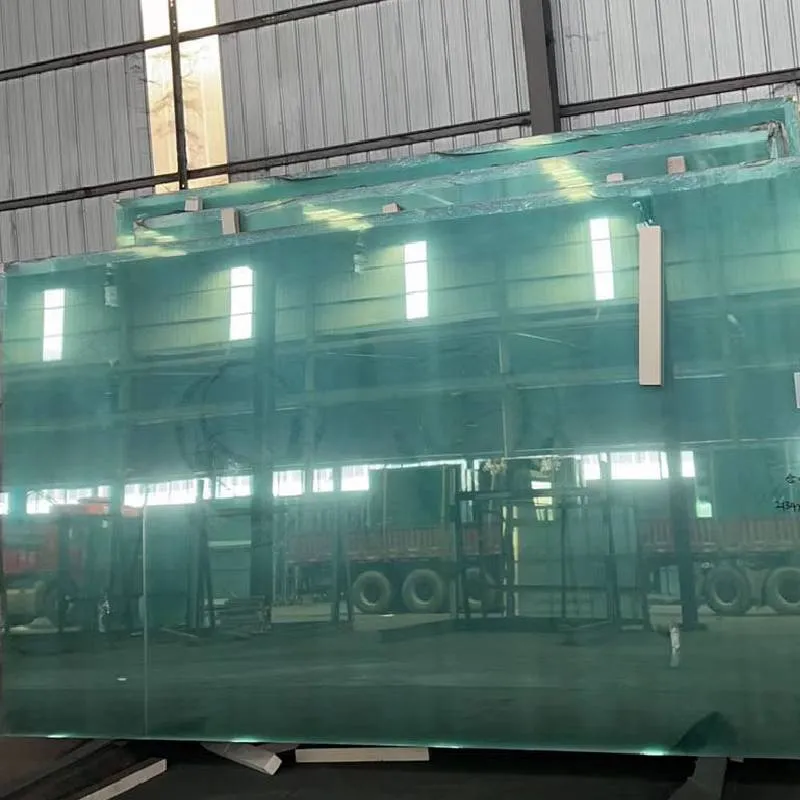The Art and Science of Decorative Glazing
Decorative glazing is an ancient craft that combines artistry and practical application, transforming ordinary glass into spectacular enhancements for architectural spaces. Ranging from stained glass windows in Gothic cathedrals to contemporary glass artworks in modern homes, the techniques and purposes of decorative glazing have evolved over centuries. This article explores the rich history, diverse techniques, and contemporary relevance of decorative glazing in today's design landscape.
A Historical Perspective
The roots of decorative glazing can be traced back to ancient civilizations, where artisans utilized natural pigments and materials to create glass that served both functional and decorative purposes. In ancient Egypt, glass bevels were used in jewelry and ornamentation, while the Romans employed colored glass mosaics to embellish their structures. However, it was during the Middle Ages that decorative glazing took on a more pronounced role, particularly within religious contexts. Stained glass windows became synonymous with cathedrals, telling stories of faith and morality through vibrant narratives and intricate designs.
The art of glazing reached its zenith in Europe during the Gothic period, where master craftsmen created monumental stained glass windows that not only illuminated sacred spaces but also depicted biblical scenes. These windows served as a form of storytelling, imparting moral lessons and enhancing the spiritual atmosphere of the church. The combination of artistic vision and technical mastery allowed for the creation of stunning visual spectacles that continue to inspire admiration today.
Techniques of Decorative Glazing
Over the years, various techniques have emerged in the field of decorative glazing, each offering unique aesthetic qualities. One of the oldest methods is stained glass, which involves the use of colored glass pieces joined together by lead came or copper foil. This technique allows for an infinity of designs, from abstract patterns to intricate figurative representations.
Another technique is etched or sandblasted glass, where artists use abrasive materials to create intricate designs and textures. This method enables a range of opacity, allowing sunlight to filter through while preserving privacy. Fused glass is another innovative approach, where different pieces of glass are melted together in a kiln. This technique can produce vibrant colors and complex shapes, ideal for both functional and artistic applications.
decorative glazing
In contemporary design, glass printing technology has taken decorative glazing to new heights
. Digital printing allows for the reproduction of any image or pattern onto glass surfaces, opening up limitless creative possibilities. Architects and designers can now incorporate customized artwork or photographs into their projects, making decorative glazing an integral part of modern architectural design.
Applications in Modern Architecture
Today, decorative glazing is not confined to religious or historical buildings. Modern architecture embraces this art form in residential, commercial, and public spaces. Architects leverage decorative glazing to foster a sense of identity and character within a building. For instance, residential homes may feature decorative glass panels in entryways, while corporate offices could incorporate glass walls displaying company branding or values.
Moreover, decorative glazing plays a crucial role in enhancing natural light within interiors. Translucent or patterned glass can diffuse sunlight, creating a warm and inviting atmosphere while maintaining privacy. This is particularly relevant in urban environments, where buildings often coexist in proximity.
Conclusion
The significance of decorative glazing transcends mere aesthetics; it embodies a fusion of art, history, and functionality. From its historical roots in medieval architecture to its contemporary applications in modern design, decorative glazing continues to captivate and inspire. Whether through stained glass, etched designs, or innovative printing techniques, the art of glazing remains a vital component of the architectural narrative.
As we move forward, the integration of innovative technologies promises to further enrich this craft, allowing for even greater customization and creativity. Ultimately, decorative glazing stands as a testament to human ingenuity and artistic expression, reminding us of the beauty that can be achieved when glass meets creativity. With each pane of decorative glass, we are not only witnessing an art form but also engaging with centuries of cultural heritage and design evolution.
 Afrikaans
Afrikaans  Albanian
Albanian  Amharic
Amharic  Arabic
Arabic  Armenian
Armenian  Azerbaijani
Azerbaijani  Basque
Basque  Belarusian
Belarusian  Bengali
Bengali  Bosnian
Bosnian  Bulgarian
Bulgarian  Catalan
Catalan  Cebuano
Cebuano  Corsican
Corsican  Croatian
Croatian  Czech
Czech  Danish
Danish  Dutch
Dutch  English
English  Esperanto
Esperanto  Estonian
Estonian  Finnish
Finnish  French
French  Frisian
Frisian  Galician
Galician  Georgian
Georgian  German
German  Greek
Greek  Gujarati
Gujarati  Haitian Creole
Haitian Creole  hausa
hausa  hawaiian
hawaiian  Hebrew
Hebrew  Hindi
Hindi  Miao
Miao  Hungarian
Hungarian  Icelandic
Icelandic  igbo
igbo  Indonesian
Indonesian  irish
irish  Italian
Italian  Japanese
Japanese  Javanese
Javanese  Kannada
Kannada  kazakh
kazakh  Khmer
Khmer  Rwandese
Rwandese  Korean
Korean  Kurdish
Kurdish  Kyrgyz
Kyrgyz  Lao
Lao  Latin
Latin  Latvian
Latvian  Lithuanian
Lithuanian  Luxembourgish
Luxembourgish  Macedonian
Macedonian  Malgashi
Malgashi  Malay
Malay  Malayalam
Malayalam  Maltese
Maltese  Maori
Maori  Marathi
Marathi  Mongolian
Mongolian  Myanmar
Myanmar  Nepali
Nepali  Norwegian
Norwegian  Norwegian
Norwegian  Occitan
Occitan  Pashto
Pashto  Persian
Persian  Polish
Polish  Portuguese
Portuguese  Punjabi
Punjabi  Romanian
Romanian  Russian
Russian  Samoan
Samoan  Scottish Gaelic
Scottish Gaelic  Serbian
Serbian  Sesotho
Sesotho  Shona
Shona  Sindhi
Sindhi  Sinhala
Sinhala  Slovak
Slovak  Slovenian
Slovenian  Somali
Somali  Spanish
Spanish  Sundanese
Sundanese  Swahili
Swahili  Swedish
Swedish  Tagalog
Tagalog  Tajik
Tajik  Tamil
Tamil  Tatar
Tatar  Telugu
Telugu  Thai
Thai  Turkish
Turkish  Turkmen
Turkmen  Ukrainian
Ukrainian  Urdu
Urdu  Uighur
Uighur  Uzbek
Uzbek  Vietnamese
Vietnamese  Welsh
Welsh  Bantu
Bantu  Yiddish
Yiddish  Yoruba
Yoruba  Zulu
Zulu 

